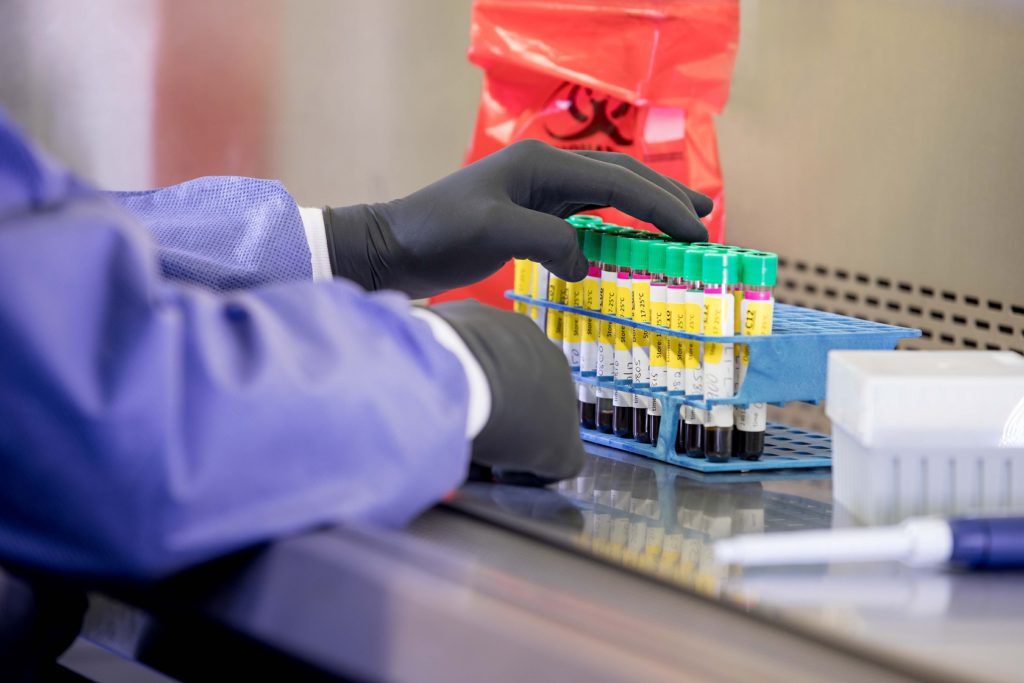Neurofilament Light Biomarker Linked With Parkinson's Disease
Posted on 19 Apr 2022
Parkinson's disease is caused by a loss of nerve cells in part of the brain called the substantia nigra. This leads to a reduction in a chemical called dopamine in the brain. Blood biomarkers may allow earlier identification of Parkinson’s disease (PD), Parkinsonism, and poor PD-related outcomes, such as physical functioning.
Neurofilament light (Nf-L), a neuronal cytoplasmic protein, is a biomarker of neurodegeneration measurable in biofluids. Scientists have examined the association of serum Nf-L at baseline with clinically diagnosed PD, parkinsonian signs, and physical functioning change over 16 years in a population-based sample of older adults.

Medical Scientists at the Rush University Medical Center (Chicago, IL, USA) collected data from 1,327 older participants from the Chicago Health and Aging Project (CHAP), a longitudinal population-based study. Clinical evaluations included assessing parkinsonian signs in four domains, bradykinesia, parkinsonian gait, rigidity, and tremors using a structured version of the United Parkinson’s Disease Rating Scale. Board-certified neurologists diagnosed PD. Physical functioning was assessed using chair stands, tandem walk, and timed walk. An ultrasensitive immunoassay was used to measure the concentration of Nf-L in blood.
The investigators reported that of the 1,254 participants where clinical PD was examined, 77 (6.1%) developed clinical PD and parkinsonian signs were on average 9.5. The APOE-e4 allele, and global cognition, a 2-fold higher concentration of serum Nf-L was associated with incident clinical PD (OR = 2.54) and global parkinsonian signs (OR = 2.44). This association was significant over five years before diagnosis. Compared to participants below 18.5 pg/mL of serum Nf-L at baseline, participants between 18.5–25.4 pg/mL, 25.4–37.3 pg/mL, and above 37.3 pg/mL had a higher odds ratio of clinical PD at all time intervals ranging from the time of diagnosis to greater than five years before diagnosis. A higher concentration of serum Nf-L was associated with a faster rate of physical functioning decline. In participants with 2-fold higher concentrations of serum Nf-L, the annual rate of decline in physical functioning increased by 0.15 units.
In an accompanying editorial Gaetani, Lorenzo MD, PhD, a Neurologist and a colleague, wrote: “This study confirms the potential of NfL to detect a neurological disease years before the clinical picture becomes manifest, even in the case of Parkinson's disease where cerebrospinal fluid (CSF) and blood NfL do not clearly peak in the clinical phase as in other central nervous system (CNS) degenerative diseases.”
The authors concluded that serum Nf-L was associated with incident clinical PD, parkinsonian signs, and physical functioning decline in a population-based sample. The findings suggest that Nf-L may serve as a potential biomarker for neurodegeneration, including Parkinson’s disease outcomes. The study was published on April 13, 2022 in the journal Neurology.
Related Links:
Rush University Medical Center














